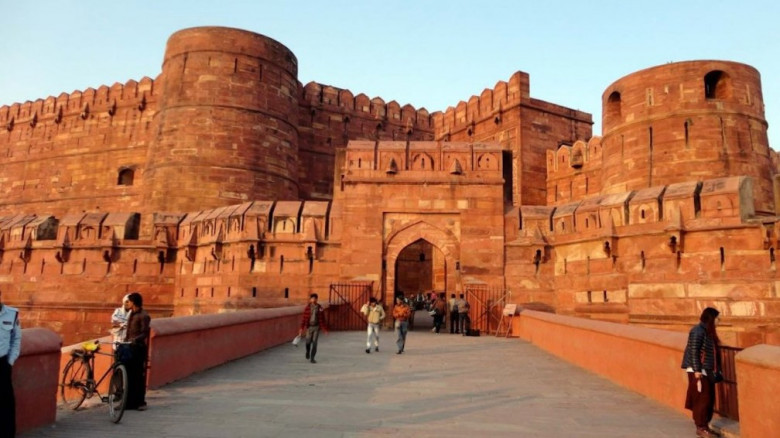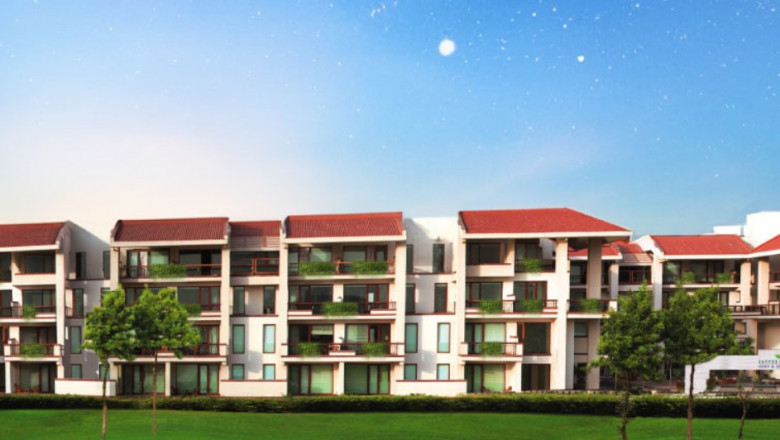views
Agra Fort: A Majestic Symbol of Mughal Architecture

Agra, a city rich in history and architectural brilliance, is home to some of India’s most iconic landmarks. While the Taj Mahal often takes center stage, Agra Fort stands as a symbol of power, grandeur, and artistic excellence. This UNESCO World Heritage site reflects the glory of the Mughal Empire, with its massive red sandstone walls, intricate carvings, and impressive courtyards. Visiting this fort is like stepping into a chapter of history, where emperors once ruled, planned battles, and left behind a legacy that continues to captivate visitors.
Whether you are a history enthusiast or simply love exploring magnificent structures, Agra Fort is a must-visit destination. Alongside its historical significance, Agra also offers luxurious accommodations for travelers seeking comfort and elegance. There are several 5 star hotels in Agra that provide world-class hospitality, making your stay as memorable as your visit to this historic fort.
History of Agra Fort
Built by Emperor Akbar in 1565, Agra Fort served as the main residence of the Mughal rulers until the capital shifted to Delhi. The fort played a crucial role in shaping India's history, witnessing important events and power transitions between rulers. Initially constructed with bricks by the Rajputs, Akbar transformed it into a massive structure using red sandstone, reinforcing it as a military stronghold.
Later, his grandson, Shah Jahan, added white marble structures within the fort, bringing a refined touch to its architectural style. However, fate had a twist for Shah Jahan—he was imprisoned within the fort by his own son, Aurangzeb, where he spent his last years gazing at the Taj Mahal, the monument he built for his beloved wife.
Architectural Marvels Within Agra Fort
Spanning approximately 94 acres, Agra Fort is an architectural masterpiece. It consists of several grand palaces, mosques, and halls that showcase a fusion of Hindu and Islamic architectural styles. Some of the most significant structures within the fort include:
Amar Singh Gate
This gate serves as the main entrance for visitors today. Originally built to confuse attackers with its dog-leg design, it reflects the strategic planning of Mughal architecture.
Jahangir’s Hauz
A huge monolithic bowl made of stone, this structure was used by Emperor Jahangir for bathing. It represents the luxurious lifestyle of the Mughal rulers.
Diwan-i-Aam (Hall of Public Audience)
This grand hall was where the emperor would meet his subjects and listen to their grievances. The red sandstone pillars and intricate designs add to its regal appearance.
Diwan-i-Khas (Hall of Private Audience)
Reserved for high-ranking officials and foreign dignitaries, this hall is adorned with intricate marble work and housed the famous Peacock Throne before it was moved to Delhi.
Musamman Burj
This octagonal tower offers breathtaking views of the Taj Mahal. It was within these walls that Shah Jahan spent his final years, gazing at the monument he built for his wife, Mumtaz Mahal.
Sheesh Mahal (Mirror Palace)
As the name suggests, this palace is adorned with thousands of small mirror pieces, creating a mesmerizing effect when light reflects off them. It was primarily used as a private residence for the Mughal queens.
Khas Mahal
A beautiful white marble palace, Khas Mahal was used as the private residence of the emperor. The delicate floral carvings and golden ceilings reflect the artistic brilliance of the Mughal era.
Moti Masjid (Pearl Mosque)
Built by Shah Jahan, this mosque is made of pristine white marble, resembling a pearl. It was used as a place of worship by the royal family.
Best Time to Visit Agra Fort
While Agra Fort can be visited throughout the year, the best time is from October to March when the weather is pleasant. Summers can be extremely hot, making it uncomfortable to explore the vast fort complex. Visiting early in the morning or late in the afternoon is recommended to avoid the harsh midday sun.
How to Reach Agra Fort
Agra is well-connected by road, rail, and air, making it easy for tourists to access the fort.
By Air: The nearest airport is Agra’s domestic airport, which has limited flights. The nearest major international airport is in Delhi, approximately 230 km away.
By Train: Agra Cantt Railway Station is the main rail hub, with several trains connecting Agra to major Indian cities.
By Road: Agra is well-connected via the Yamuna Expressway, making it an easy road trip from Delhi in about 3-4 hours.
Local transport options such as auto-rickshaws, cycle rickshaws, and cabs are available for reaching Agra Fort from different parts of the city.
Where to Stay: Luxury Hotels Near Agra Fort

After a long day of exploring historical sites, having a comfortable place to relax is essential. There are several 5 star hotels in Agra that offer a luxurious stay with world-class amenities. These hotels provide spacious rooms, fine dining experiences, spa facilities, and excellent hospitality, ensuring a memorable stay.
Many 5 star hotels in Agra are located close to major attractions, making it convenient for travelers to explore the city with ease. Whether you are looking for a heritage-style hotel or a modern luxury experience, Agra has several options to suit your preferences.
Conclusion
A trip to Agra is incomplete without visiting Agra Fort, a historical masterpiece that reflects the grandeur of the Mughal Empire. From its massive walls to its intricately designed palaces, the fort stands as a testament to the artistic and architectural brilliance of its time. Each structure within the fort tells a story, making it a fascinating destination for history lovers and tourists alike.
To make your visit even more enjoyable, staying at a premium hotel is essential. For a luxurious experience, Jaypee Palace Hotel & Convention Centre, Agra offers the perfect blend of comfort, elegance, and top-notch hospitality. With its exceptional service and prime location, it ensures a memorable stay while you explore the historical wonders of Agra.














Comments
0 comment